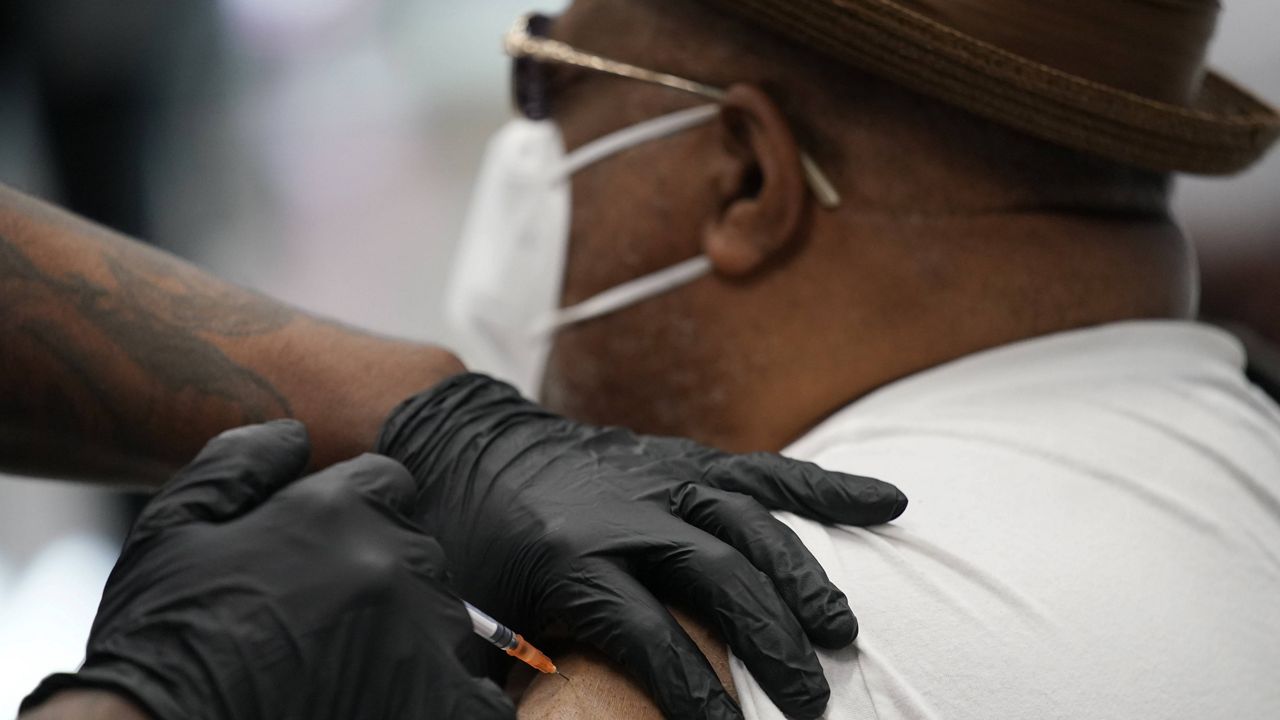The rate of COVID-19 vaccinations in the United States has slowed in recent days, a sign that supply might soon outstrip demand.
What You Need To Know
- Data from the CDC show the seven-day average for daily vaccinations fell each day from April 12 to 17, the last day numbers were available
- Former CDC Director Dr. Tom Frieden blamed the decline on a combination of the Johnson & Johnson vaccination pause and the fact that the U.S. has likely already vaccinated the vast majority of those who were eager to receive the shots
- The Kaiser Family Foundation warned Tuesday that the U.S. “will likely reach a tipping point on vaccine enthusiasm in the next 2 to 4 weeks"
- Health and Human Services Secretary Xavier Becerra said "fluctuation is not uncommon" in vaccination numbers and that "what we want to do is continue to encourage Americans to continue to get vaccinated"
Data from the Centers for Disease Control and Prevention (CDC) show the seven-day average for daily vaccinations fell each day from April 12 to 17, the last day numbers were available. The only other dip since COVID-19 vaccines hit the market was recorded in February, when winter storms forced vaccination sites to close and shipments to be delayed.
The Washington Post reported there has been a 11% decrease in the seven-day vaccination average from the previous week. Meanwhile, scores of counties across the country, including 43 in Iowa, have declined vaccine shipments due to lack of demand, prompting the state’s Republican governor, Kim Reynolds, to make an appeal to her constituents.
"If you're opting to wait and see, what are you waiting for?” Reynolds asked at a news conference Wednesday. “If you've been a hard 'no' from the start, what's your reason? And if you can't answer those questions, maybe, we hope, that you take the time to reconsider."
In Florida, Palm Beach County plans to close mass vaccination clinics at the end of May with thousands of available vaccine slots unclaimed. In rural West Virginia, a vaccine clinic at a casino/race track parking garage is opening shots to out-of-state residents to address lagging demand. The hope is that people from Washington, D.C., make the hour's drive to get vaccinated. In Arizona, a plan collapsed that would have opened a federally run vaccine site in Tucson; demand is slipping and county officials preferred more targeted, mobile locations.
The decline in vaccinations comes despite the U.S. on Monday having expanded eligibility to everyone ages 16 or older.
As of Thursday morning, 135.8 million Americans (40.9% of the population) have received at least one vaccine dose and 89.2 million (26.9%) have been full vaccinated, according to data from the CDC.
In an interview with MSNBC on Thursday, former CDC Director Dr. Tom Frieden blamed the decline in inoculations on a combination of the Johnson & Johnson vaccination pause amid concerns about blood clots in a handful of recipients and the fact that the U.S. has likely already vaccinated the vast majority of those who were eager to receive the shots.
“And now the challenge is to reach the unreached,” Dr. Frieden said. “And that is really the theme of what we need to do going forward — reach the unreached. And that's quite diverse. That now includes Black and Latinx people in the U.S. That includes Trump voters in rural areas.”
With the decline beginning the day before the pause was recommended, it doesn’t appear the Johnson & Johnson interruption is solely to blame. The shots had accounted for less than 5% of vaccines given in the U.S. before the stoppage, and federal officials said they were able to use more Pfizer and Moderna doses to make up for the supply dip.
And an Axios-Ipsos poll found this week that the Johnson & Johnson pause had no impact on Americans’ likelihood to be vaccinated, with 20% saying they are not likely to get the vaccine as soon as it’s available to them.
A different poll from the Kaiser Family Foundation, a nonpartisan, health-policy think thank, found that the number of Americans who have been vaccinated or are willing to be as soon as possible has increased, from 55% last month to 61% now.
But the foundation warned Tuesday that the U.S. “will likely reach a tipping point on vaccine enthusiasm in the next 2 to 4 weeks.”
“Once this happens, efforts to encourage vaccination will become much harder, presenting a challenge to reaching the levels of herd immunity that are expected to be needed,” the organization said.
The foundation noted that 61% of the population translates to about 157 million adults, leaving about 21 million people who are eager and eligible to be vaccinated. The U.S. is currently administering about 2.8 million doses a day, according to the CDC.
The Biden administration has been working to combat vaccine hesitancy since President Joe Biden took office. On Wednesday, Biden called on companies to give employees paid time off to get vaccinated or recover from side effects. He announced a tax credit for small and medium-size businesses that do so.
The administration is also working to ensure that 90% of Americans live within 5 miles of a vaccination site as well as calling on businesses, celebrities, faith leaders and doctors to help promote the shots, among other steps.
Asked about the dip in vaccinations, Health and Human Services Secretary Xavier Becerra said "fluctuation is not uncommon" and that "what we want to do is continue to encourage Americans to continue to get vaccinated."
The Associated Press contributed to this report.



